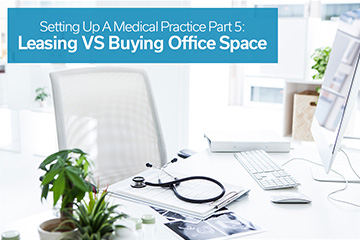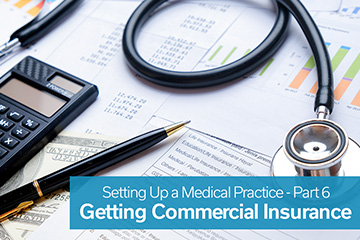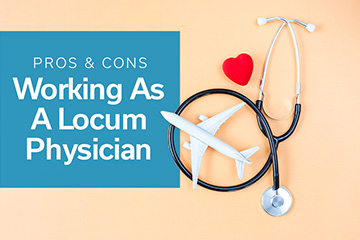
Setting up a Medical Practice Part 5: Leasing vs Buying Office Space
Pros of buying a medical office space:
Securing a prime location for your medical practice provides stability and potential growth through foot traffic and public transit accessibility. Ownership offers freedom and control, allowing you to make changes to your property and control its future without the risk of losing your practice due to lease expiration or landlord decisions.
Owning commercial real estate can build personal wealth and equity, which can be used as collateral for loans, freeing up working capital and allowing you to pay yourself rent. This approach can lead to property appreciation and increased retirement savings.
Financial benefits of ownership include fixed costs, tax deductions from mortgage interest and property taxes, and building depreciation claims. Additionally, you can generate extra income by renting out unused space or maintaining the property as a rental after closing your practice.
Cons of buying a medical office space:
Rising interest rates and market fluctuations can impact the value of your medical office space. Owning property also reduces flexibility and cash flow, which can be problematic for new or growing practices.
Buying medical office space involves upfront costs such as property, appraisal, real estate, closing, and maintenance costs, as well as ongoing additional costs like property taxes and utilities. There is also risk involved, as predicting future needs and market conditions is difficult.
Protection and due diligence are essential to avoid hidden defects or contamination. This may require building inspections, environmental assessments, and legal assistance.
Owning a property comes with opportunity costs, both financial and time-wise. The investment could be used to grow your practice in other ways, and property management can take time away from patient care. Ensure your practice has the resources to support property ownership in the long term.
Pros of leasing a medical office space:
Leasing offers time-saving benefits, as landlords handle repairs and maintenance, allowing you to focus on your practice. It can also provide a prime location at a more affordable cost than buying.
Leasing offers flexibility for growing or downsizing practices and makes it easier to move quickly. It frees up working capital for market opportunities and larger loans to support growth.
Financial benefits of leasing include a low initial financial commitment, tax-deductible lease payments, improved cash flow and credit rating, potential inclusion of utilities and services in rent, and fewer unforeseeable costs, as most large capital items are the landlord’s responsibility.
Cons of leasing a medical office space:
Leasing comes with variable costs and lacks equity, resulting in funding someone else’s retirement. It also offers less stability, as landlords may choose not to renew a lease, forcing a costly relocation.
Leasing provides limited control over maintenance, renovations, and improvements, and may include restrictions on space usage, parking, signage, and property conditions.
Consider the duration of your commitment, your practice’s growth rate, and local market conditions when deciding whether to buy or lease. Ultimately, the specific property and cost comparisons may be the deciding factors.
Both options have pros and cons that impact your finances and practice management. Consider these factors when planning for your future to set yourself up for success.





